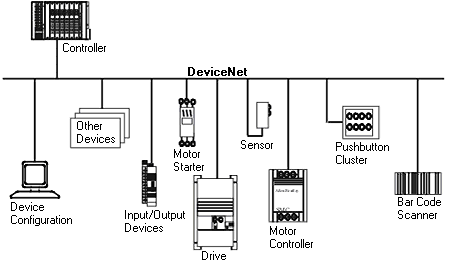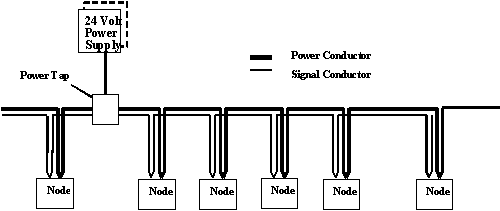Basic DeviceNet principles
Introduction to the system
DeviceNet is an open system based on CAN. CAN was developed some years ago by R. Bosch for data transmission in motor vehicles. Millions of CAN chips are now in use. A disadvantage for application in automation is that CAN does not contain definitions for the application layer. CAN only defines the physical and data link layer.
DeviceNet specifies a uniform application layer and this makes it possible to use the CAN protocol for industrial applications. ODVA (the Open DeviceNet Vendor Association) is an independent association which supports manufacturers and users of the DeviceNet system. ODVA ensures that all devices which conform to the specification can operate together in one system, regardless of their manufacturer. CAN’s bit arbitration procedure makes it theoretically possible to operate communication networks using master/slave and multimaster access methods.
Further details can be found on the official website of the ODVA (http://www.odva.org).

Bus cable
The bus cable consists of two pairs of shielded twisted-pair wiring, one for the data transfer and one for the power supply. The latter can carry currents of up to 8 amperes. The maximum possible length of a line depends essentially on the baud rate. If you choose the highest Baud rate (500 kbaud) you are restricted to lines of at most 100 m. With the lowest Baud rate (125 kbaud) you will be able to use cable with an overall length of 500 m. Refer to the chapter "Mounting and wiring" for details
